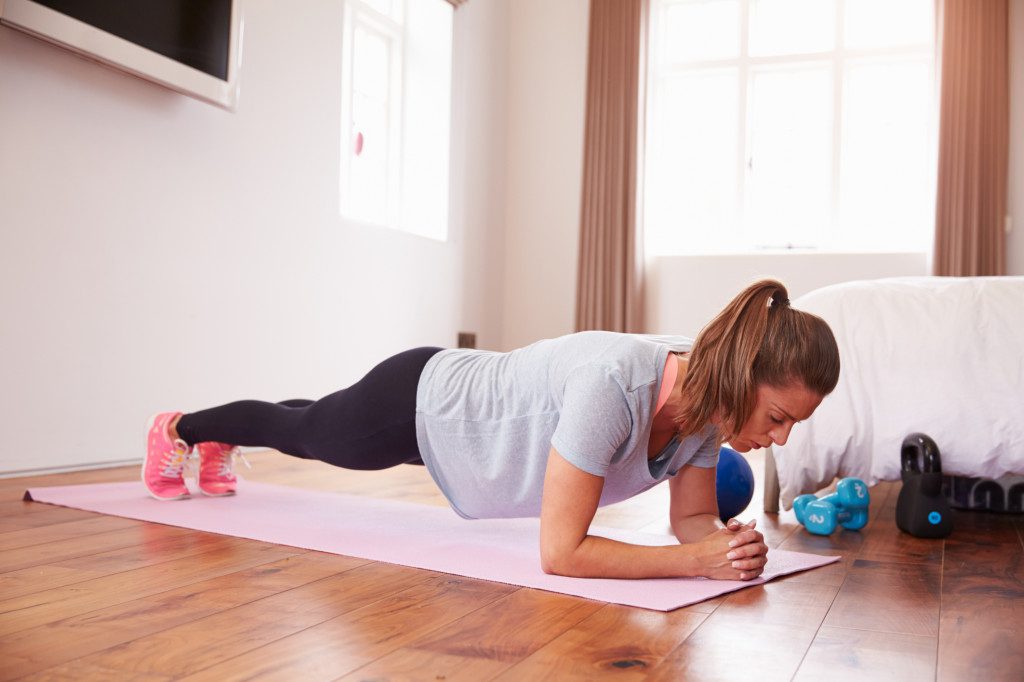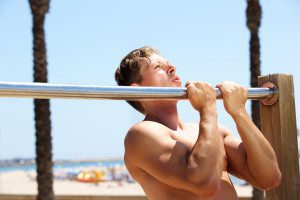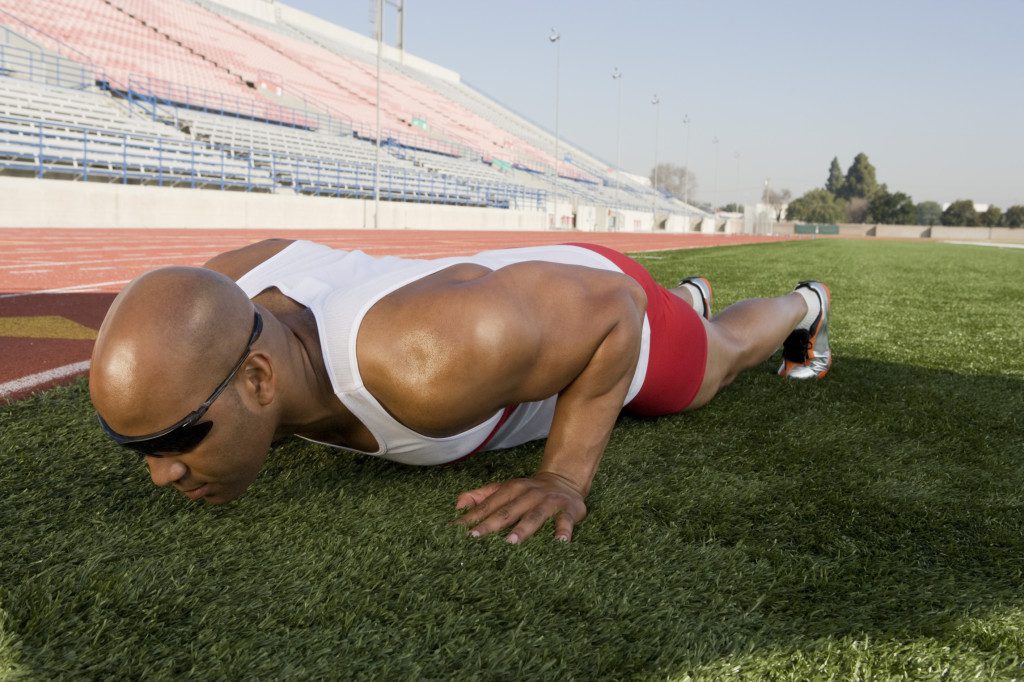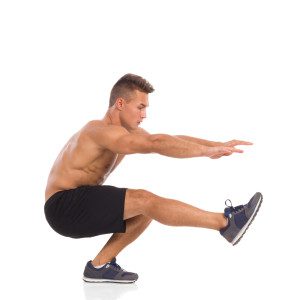Bodyweight Conditioning for Triathletes
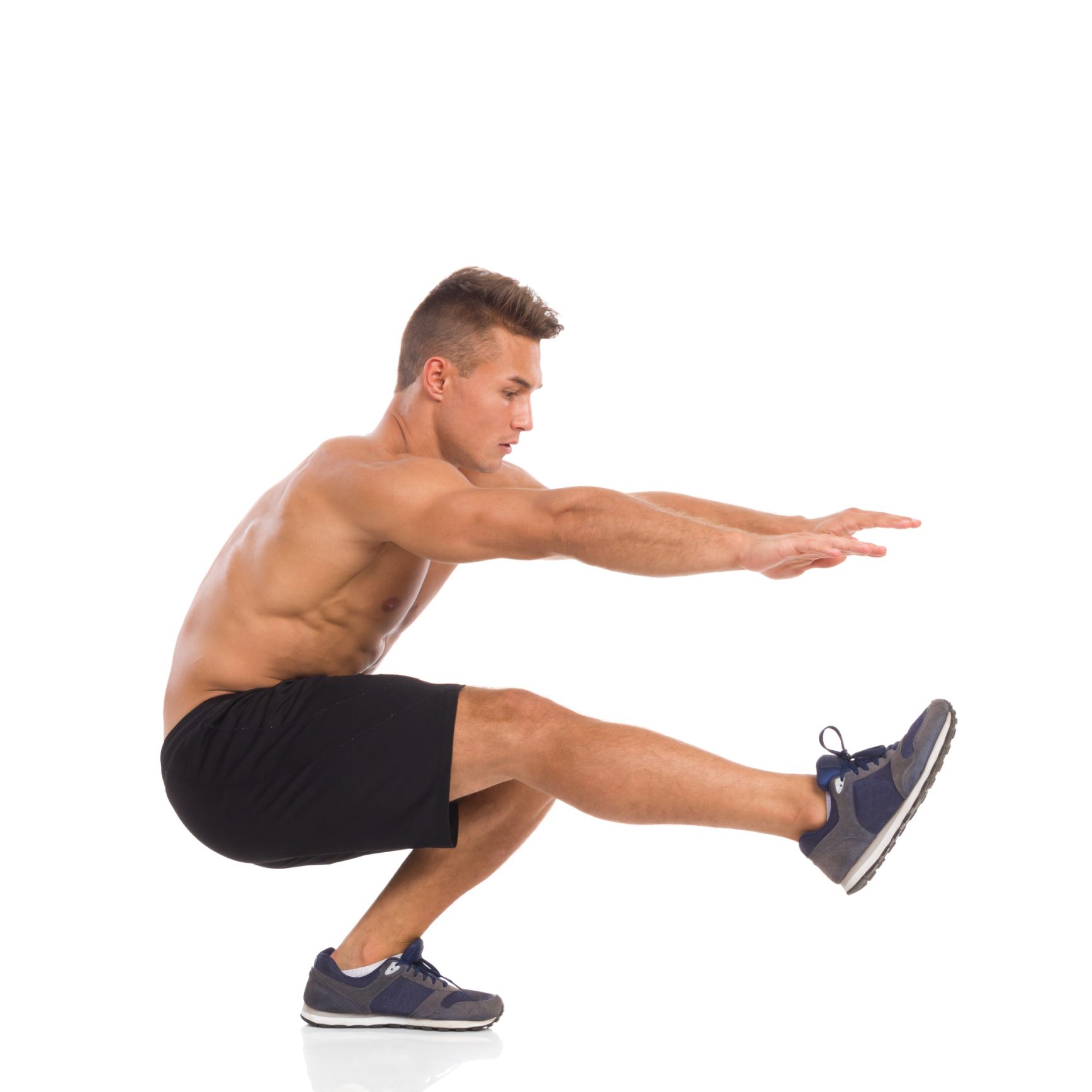
Triathletes face a dilemma when it comes to strength training. The benefits of adding strength work into your training regimen often reveal themselves in the form of better technique, injury reduction and ultimately faster racing. At the same time, many triathletes find that it hard to strike a perfect balance with weight training. Too much can lead to unwanted muscle mass that doesn’t help endurance athletes. With too little, won’t see results. The fix? Bodyweight conditioning is a great way to build muscular strength without adding muscle mass. There are several easy bodyweight strength moves that work different parts of the body and benefit your swimming, cycling and running. These exercises can be modified for different levels and most are simple enough to perform anywhere – home, work and the gym. Here are the essential bodyweight conditioning moves for triathletes.
Plank
Having a strong core is necessary to run, ride and swim efficiently. This is a movement you can always improve on – give yourself the challenge of adding 15 second to your plank hold each time you perform it. Be sure to keep your hips down and back flat. Putting your hands on an exercise ball while you plank will increase difficulty for triathletes wanting an extra challenge!
The best way to become a better swimmer is by increasing your stroke power and the pull-up can help by strengthening your biceps, lats and triceps. Not many people can perform a strict pull-up on a bar and it may take months of trying before you’re able to. The best drill is the negative pull-up, which by itself builds strength in the same muscle groups. Position yourself on a stool beside the bar and grip it firmly. Release your feet and hold yourself in place as long as possible. Slowly lower yourself down until your arms are fully extended. 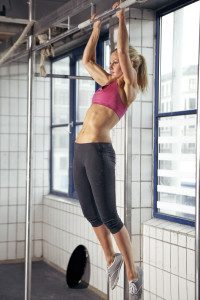
If you’ve already mastered the pull-up, try pulling yourself a little higher each rep to bring your chest to the bar as opposed to just your chin. Additionally, hold a dumbbell between your legs as you perform your pull-up for an added weight challenge.
Push-ups
Another great exercise to build arm strength for swimming and the core stability. Most people don’t know how to perform a proper push-up. Hands should be just outside shoulder-width apart and it’s important that your hips don’t sag. When you bring your chest down, make sure your elbows are at a 45 degree angle to your body. If you aren’t able to bring yourself low enough, practice bringing your chest right to the ground in a controlled effort. Push your way back up while making sure your lower back and hips stay straight like in a plank.
Squat
Squats target all major leg muscles from glutes to hamstrings. There is a common misconception that squats will ruin your knees. As long as you are mindful of technique and practice without heavy weight at 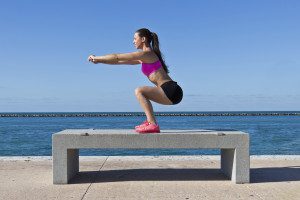 first, you will actually increase knee stability. Many triathletes have a difficult time squatting properly (with hip crease falling below parallel) because of tight hip abductors. Be patient and focus on getting as close to the ground as possible. Make sure your knees don’t cave inwards – prevent this by pushing them out as your rise up from your squat. Perform several reps each day to see results in the form of greater leg power.
first, you will actually increase knee stability. Many triathletes have a difficult time squatting properly (with hip crease falling below parallel) because of tight hip abductors. Be patient and focus on getting as close to the ground as possible. Make sure your knees don’t cave inwards – prevent this by pushing them out as your rise up from your squat. Perform several reps each day to see results in the form of greater leg power.
Increase intensity by trying the pistol squat. This is a one-legged squat that is harder than it looks. You may need to practice off-setting your balance by holding a heavy object in front of you as you descend.
